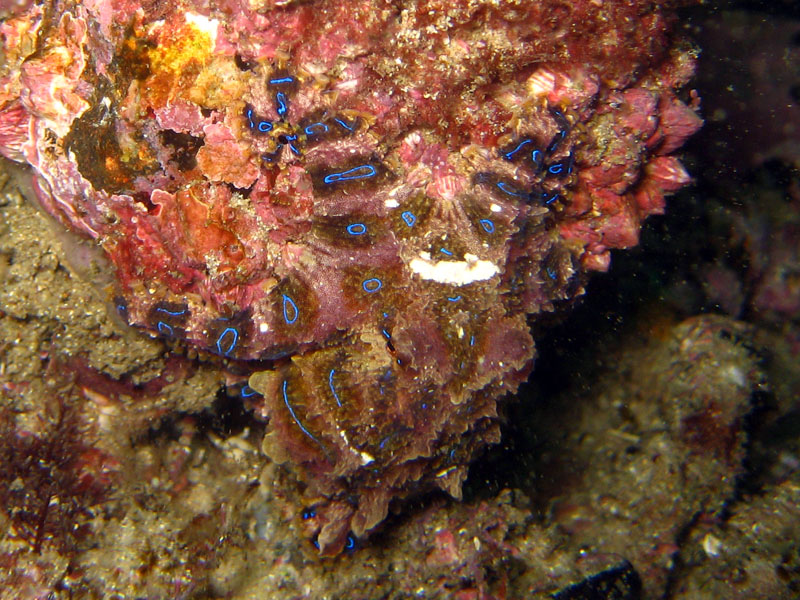Adaptation
 Along
with possessing its lethal toxin, which most animals, especially
octopuses, don't have, the greater blue-ringed octopus has made
other adaptations that attribute to its survival. Like many other
octopuses, Hapalochlaena lunulata adapted
chromatophores that
allow them to blend into their surroundings. Chromatophores
are specialized cells that some organisms, like chameleons, utilize
to either hide themselves from predators or sneak up to capture
their prey. Although the blue sticks out in the picture shown
here, the rest of the animal appears to fade into the background of
the rock it is positioned on. Even locating the eyes can prove
to be difficult!
Along
with possessing its lethal toxin, which most animals, especially
octopuses, don't have, the greater blue-ringed octopus has made
other adaptations that attribute to its survival. Like many other
octopuses, Hapalochlaena lunulata adapted
chromatophores that
allow them to blend into their surroundings. Chromatophores
are specialized cells that some organisms, like chameleons, utilize
to either hide themselves from predators or sneak up to capture
their prey. Although the blue sticks out in the picture shown
here, the rest of the animal appears to fade into the background of
the rock it is positioned on. Even locating the eyes can prove
to be difficult!
Another feature that is exhibited by Hapalochlaena lunulata, as well as all octopuses, is their extreme flexibility. This flexibility is attributed to the criss-cross pattern of the fibers found in their musculature. This allows for the octopus to squeeze through extremely tiny areas that are about the size of their eyes.
Continue to Definitions